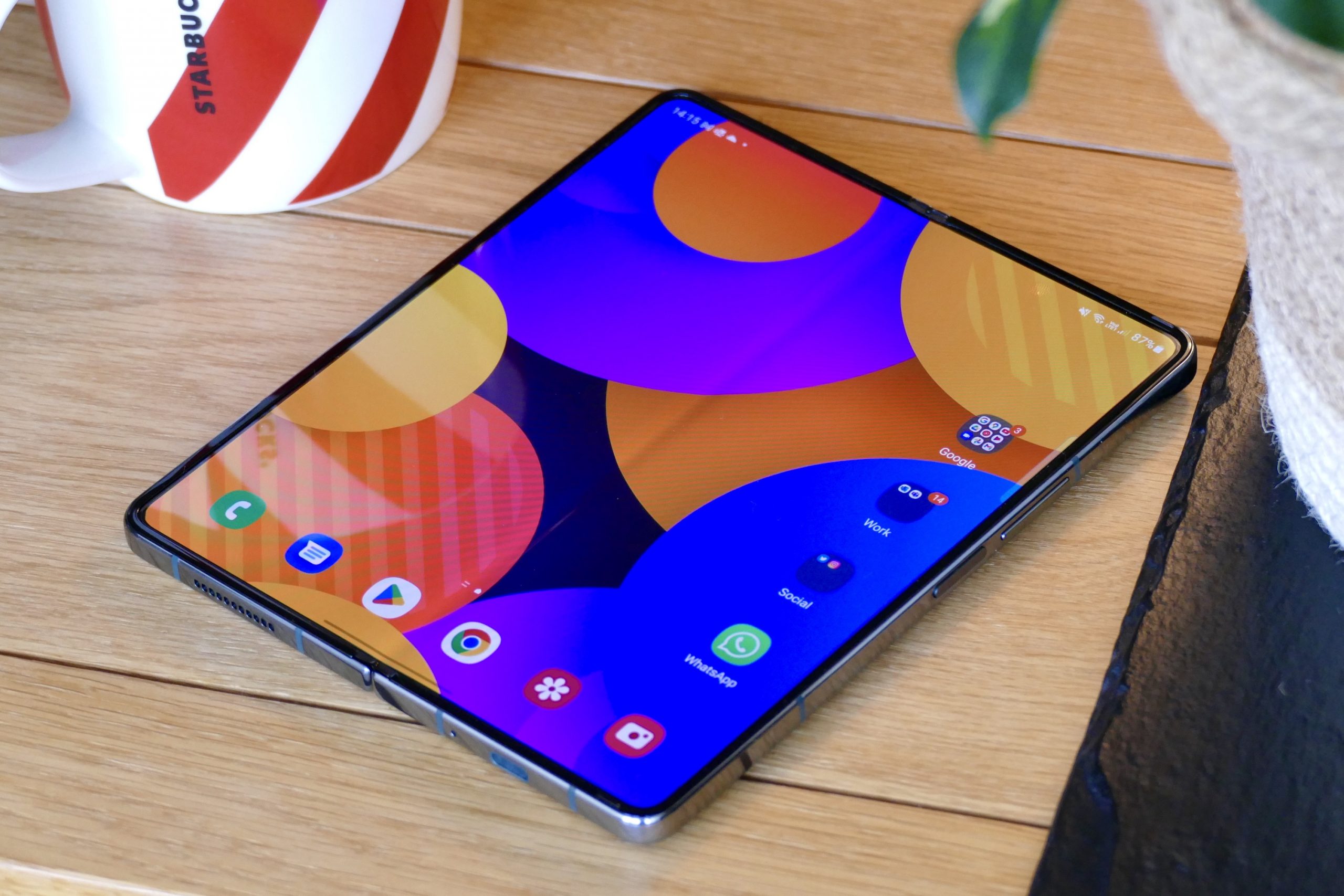When the first folding smartphones arrived, they looked and felt like something from the future. Now, just a few years after those early models were made available in limited quantities, these exciting devices have been steadily refined and improved so they’re ready for everyday use. While prices are dropping as the technology matures, they’re still expensive purchases, so making the right buying decision is imperative.
At the moment, there are two distinct types of folding smartphones. The first is one that resembles a regular non-folding phone that unfolds out into a larger, tablet-like device. The second is one that recalls clamshell phones like the classic Motorola Razr, where a normal-sized phone folds in half to become more compact and pocketable. They both use basically the same screen and hinge technology, but serve different needs.
In the future, other styles will likely arrive, but for now you must choose which of these two designs best suits your lifestyle. Whichever you choose, those first few weeks and months with your new folding smartphone are exciting, fun, and genuinely transformative. Now, let’s get you to that stage with our list of the best folding phones you can buy in 2023.
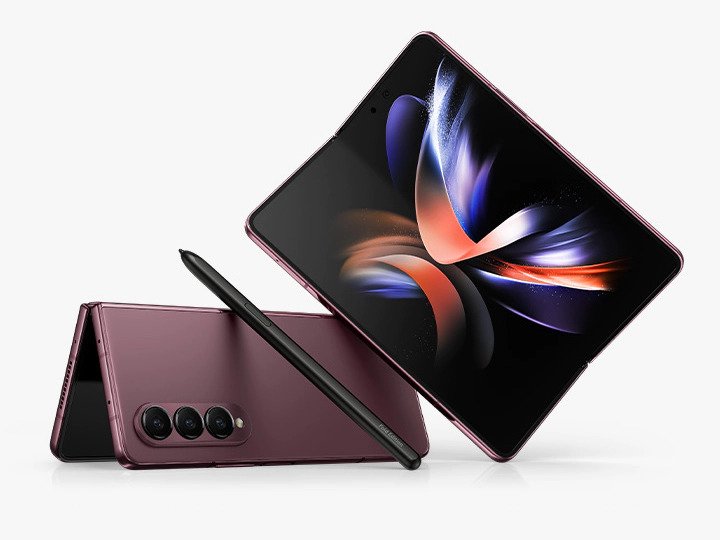

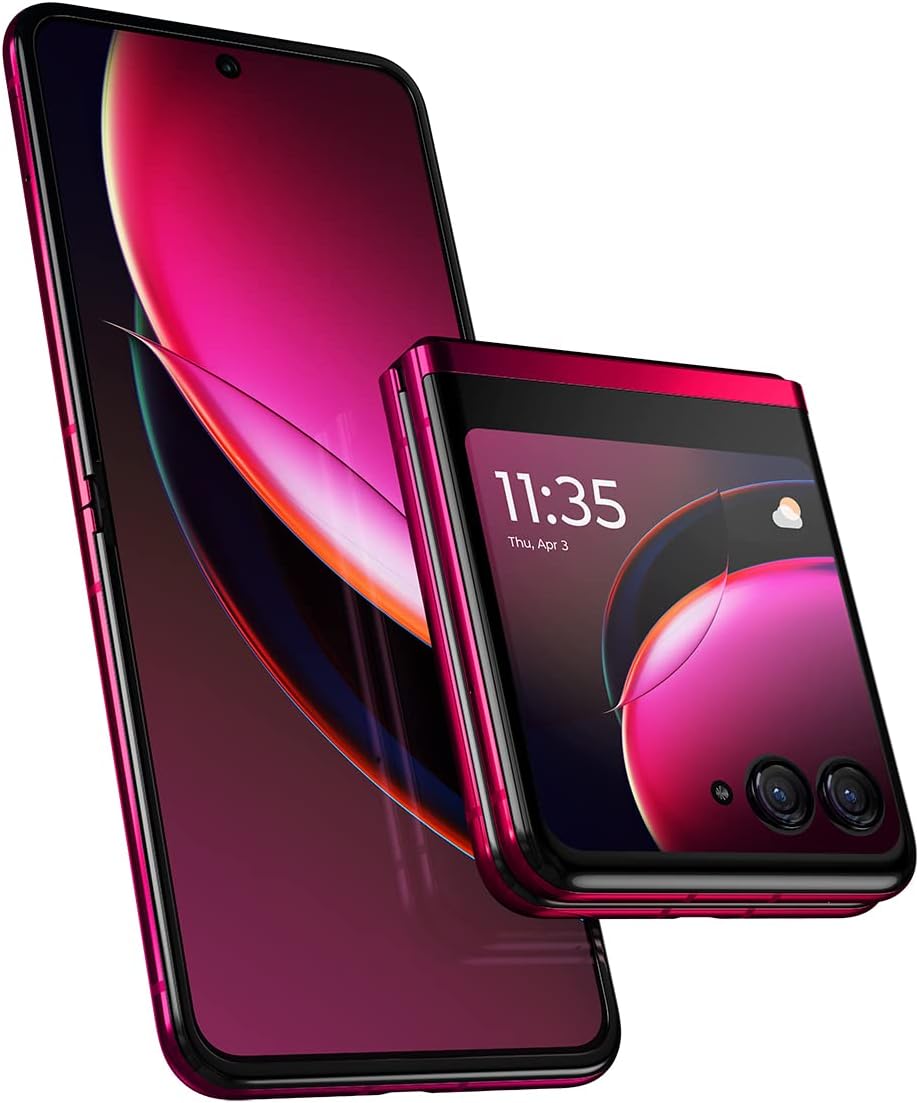

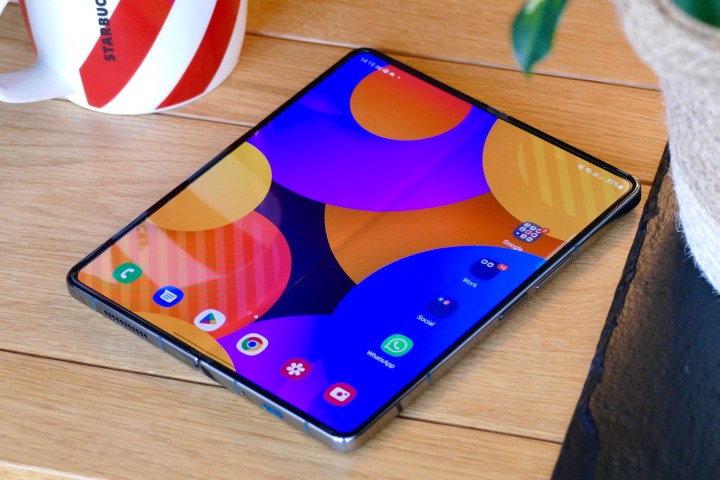
Andy Boxall/Digital Trends
Samsung Galaxy Z Fold 4
Best folding phone
- Usable cover screen
- Excellent multitasking features
- Inner screen is great for games and video
- Reliable and fun camera
- Water resistant and durable materials
- Heavy use kills the battery
- Slow charging
Why you should buy this: It’s one of the best mass market foldables that lets you be incredibly productive.
Who’s it for: Multitaskers who like having a large and flexible screen.
Why we picked the Samsung Galaxy Z Fold 4:
The fourth generation of Samsung’s flagship foldable is here, and it’s everything we hoped for and more.
Available in Phantom Black, beige, Greygreen, or a Samsung-exclusive burgundy, the Z Fold 4 boasts a 6.2-inch Dynamic AMOLED 120Hz cover screen and a 7.6-inch Dynamic AMOLED 120Hz main screen. There’s even a camera on the unfolded screen too, as the Z Fold 4 uses a clever, hidden under-display camera. See if you can spot it.
As you’d expect for such a versatile device, the Z Fold 4 is heavy at 263 grams, and at 15.8mm thick when closed, it is thick too. But it’s not as hefty as the Z Fold 3, showing how fast the technology is moving. Samsung has also refined the screen, hinge, and chassis from the old model, so the Z Fold 4 isn’t quite as tall, nor as slim as its predecessor. The Cover Screen now almost feels like you’re using a non-folding phone.
Multitasking is where this foldable shines. You can split the screen into four apps at once, and the new Taskbar shows multiple quick-access icons along the bottom of the screen, just like Windows Taskbar or the dock in macOS. There’s masses of power too, thanks to the fast and efficient Qualcomm Snapdragon 8+ Gen 1 processor, 12GB of RAM, and up to 1TB of storage.
The Z Fold 4 takes great photos. It has a 50-megapixel main camera, a 12MP wide-angle, and a 10MP telephoto with 3x optical zoom and 30x max digital zoom lenses. Anyone who takes video will love that it maxes out at a whopping 8K resolution at 24frames per second (fps).
If there’s one thing that lets down this productivity powerhouse, it’s the slightly weak 4,400mAh battery and slow 25-watt wired charging speeds. But if you’re a serious multitasker looking for a stunning, powerful phone, this is the foldable to get.
Samsung will be having a Galaxy Unpacked event on July 26, and we should expect the Galaxy Z Fold 5 to be announced then. The Z Fold 4 is still an outstanding foldable, though it may be worth waiting a little bit to see what its successor has to offer.

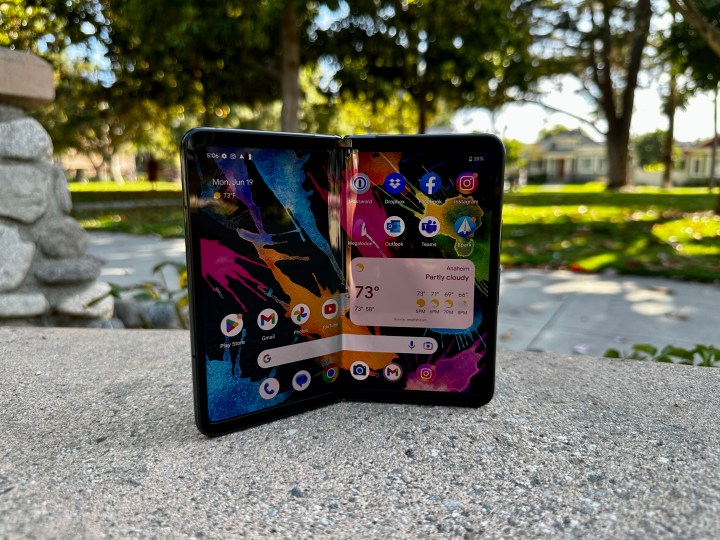
Christine Romero-Chan / Digital Trends
Google Pixel Fold
Bets folding phone runner-up
- Solid build quality
- Great cover display size
- Barely any gap when closed
- Beautiful displays
- Fantastic cameras
- Fast performance
- Cover display scratches easily
- One-day battery life
- Poor wireless charging options
Why you should buy this: It’s a powerful folding phone with a clean stock Android experience and multitasking capabilities.
Who’s it for: Anyone who wants a foldable phone with a normal-feeling cover display.
Why we picked the Google Pixel Fold:
Google’s first entry in the foldable market is a surprisingly good one. If you don’t like the tall and narrow cover display of the Z Fold 4 or just prefer a cleaner, more stock Android experience, then the Pixel Fold could be worth considering.
The 5.8-inch OLED cover display on the Pixel Fold looks great and is also similar to most smartphones, so it isn’t uncomfortable to use or type on. We also found it very easy to use one-handed due to the size, and when the device is closed, there is no gap like you’ll find on the Z Fold 4. On the inside, you’ll find a 7.6-inch inner OLED display, but it’s positioned to be in landscape orientation by default, though you can rotate for portrait orientation if needed. Both displays have a 120Hz refresh rate and get bright enough to use outdoors, though the inner display can be quite reflective due to the built-in plastic screen protector.
The Tensor G2 chip is inside, along with 12GB of RAM. You can get it in either 256GB or 512GB storage capacities. Thanks to the G2 chip, performance is powerful for everyday tasks, and the device is quite responsive. You also get great results with photos due to Google’s powerful AI and computational photography processing techniques. On the camera side, you get a 48MP main camera, a 10.8MP ultrawide camera, and a 10.8MP telephoto camera with 5x optical zoom. The cover display has a 9.5MP selfie camera and the inner display has an 8MP selfie camera. You can also unfold the device and get a high-quality selfie by using the rear camera in Rear Camera Selfie mode.
The Pixel Fold has a 4,821mAh battery that lasts about a full day with moderate to heavy use. Charging speeds reach up to 30W, but Google does not include a power adapter, so you need to provide your own. Wireless charging is a little disappointing at max speeds of 7.5W, and there is no reverse wireless charging.


Joe Maring/Digital Trends
Motorola Razr Plus
Best folding flip phone
- Viva Magenta color looks incredible
- Water and dust resistance
- Game-changing cover screen
- Super-minimal display crease
- Excellent performance
- Lovely software experience
- Mediocre cameras
- One-day battery life
- Wired charging capped at 30W
Why you should buy this: It’s one of the only flip phones on the market right now with a large cover screen that does more than just show you notifications.
Who’s it for: Anyone who wants a powerful phone in a compact and small package that’s also fun to use.
Why we picked the Motorola Razr Plus:
The Motorola Razr Plus is one of the best compact flip phones we’ve used this year. It has a solid hinge, though it’s not as stiff as the Z Flip 4, so you can’t keep it propped up at any angle like the competition, but it’s still easy to open and it can still hold the phone upright when you need it to. The Viva Magenta color is bright and eye-catching, and also has a unique leather back that adds grip. The other two colors, Infinite Black and Glacier Blue, look nice as well but don’t come with the leather backing. Instead, those two have frosted glass. The Motorola Razr Plus also has impressive IP52 dust and water resistance.
The screens on the Razr Plus are impressive. The exterior has a 3.6-inch pOLED display that is HDR10+ certified, has a 1066 x 1056 resolution at 413 pixels per inch (ppi), and a 144Hz refresh rate. Plus, it can do so much more than just show you notifications and simple widgets. You can access Quick Settings, have a cover display “home screen” with panels, and even customize them. But the best feature is that you can run any Android app on the cover screen. Sure, it may not be the most optimized way to use some apps, but being able to access them on a 3.6-inch display without having to open up the phone is a feat in itself and makes the cover screen vastly more usable.
When you open up the Razr Plus, you get a 6-inch pOLED display with a 2640 x 1080 resolution, 1,400 nits of peak brightness, HDR10+ support, and a 165Hz refresh rate. In other words, it’s lovely. Colors are bright and vivid, text is crisp and sharp, and it’s bright enough to use outdoors in direct sunlight without issue. And if you’re worried about the crease, don’t be! It’s very minimal compared to other foldables on the market.
The cameras aren’t super great though, as you only get a 12MP main camera, 13MP ultrawide, and 32MP selfie camera. Pictures will come out fine for the most part, but the colors may be slightly off from what you see in reality, and the phone may not capture motion shots very well.
On the inside, the Razr Plus has a Qualcomm Snapdragon 8+ Gen 1, which packs in plenty of power despite coming out last year. It also has 8GB of RAM, so the Razr Plus should handle pretty much anything with ease. But be warned — it does tend to get warm after prolonged use.
The 3,800mAh battery lasts around one full day. It reaches charging speeds of up to 30W through wired charging and 5W wireless charging. There is no reverse wireless charging, however.


Joe Maring/Digital Trends
Samsung Galaxy Z Flip 4
Best folding flip phone runner-up
- Flatter design looks and feels fantastic
- Bespoke customization is unmatched
- Excellent main display
- Blazing fast performance
- Good, fun cameras
- Battery still only lasts a day
- Limited cover screen functionality
Why you should buy this: A super compact flip phone with good performance.
Who’s it for: Anyone who wants a powerful phone that is super compact and portable.
Why we picked the Samsung Galaxy Z Flip 4:
The Z Flip 4 takes everything we loved about the Z Flip 3 and improves on it. In our review, we go so far as to say this is an almost perfect foldable flip phone, and we’ve even questioned if it’s a better buy than the Galaxy Z Fold 4.
The Galaxy Z Flip 4 boasts the same cute clamshell design as its predecessor, but this time around, there’s a flatter frame with a slightly smaller hinge — giving the phone a more compact, pocket-friendly footprint. The frosted matte glass panel on the rear hides fingerprints and feels luxe, while the slimmer hinge should still survive over 200,000 folds, according to Samsung. The Z Flip 4 comes in Bora Purple, blue, Pink Gold, Graphite, or a range of Bespoke Studio colors.
With its 6.7-inch Dynamic AMOLED 2x display with 120Hz variable refresh rate and 1.9-inch Super AMOLED cover screen, things don’t look that different from the Z Flip 3. But this time around, you get Qualcomm’s latest Snapdragon 8+ Gen 1 chip with 8GB of RAM, and a beefier 3,700mAh battery with faster 25W wired charging.
Samsung’s also packed 12MP primary, 12MP ultrawide, and 10MP selfie cameras on board the Z Flip 4, with a 65% brighter sensor that should mean better lowlight photography.
The Z Flip 3 was a bestseller for Samsung, and with these small but important upgrades, the Z Flip 4 looks set to follow hot on its heels. However, despite better battery life, you’re only going to get a full day out of this phone, and the 8GB of RAM may be limiting if you’re a serious multitasker, in which case the Z Fold 4 is likely a better choice for you.
Again, like the Galaxy Z Fold series, we’re expecting a Samsung Galaxy Z Flip 5 to be revealed at the Galaxy Unpacked event later this year.

Frequently Asked Questions
Foldable smartphones are more versatile than non-folding phones. If you choose a large folding smartphone like the Samsung Galaxy Z Fold 4, the open screen’s size makes it great for watching videos, playing games, reading, and multitasking — just like on a tablet. Once you’re done, you can close the phone so it’s a “normal” size and easier to carry around than a tablet, yet still usable like a non-folding phone.
Models like the Galaxy Z Flip 4 are also versatile, just in a different way. Open, the screen is the same size as a large non-folding smartphone, but you can fold the phone in half when it’s not in use. It’s the perfect phone for anyone who values convenience but doesn’t want to sacrifice a useful, modern, big screen in their quest for a more pocketable device. Non-folding smartphones can’t match this level of versatility.
It’s surprisingly difficult to imagine how transformative owning a folding smartphone can be, so we really recommend trying one out in a shop before buying. Often, just the action of folding and unfolding the phone is often enough to fire your imagination, and you’ll start to understand how helpful this new wave of smartphones can be. Not everyone will benefit from the technology, but don’t dismiss them until you’ve held one in your hands.
Anyone with a strong interest in mobile technology will appreciate owning a folding smartphone, as it really does feel completely different from a non-folding phone. If you’re always keen to try out the latest tech, then definitely consider making a foldable your next phone.
If you use your phone for a lot of different things, from reading and watching videos to work and endless messaging, a big-screen foldable may save you time and increase your enjoyment. Think of it as a phone and a tablet, all in one. Perhaps your phone is your only device. If so, a Galaxy Z Fold 4 may also be worth the investment due to its versatility.
Small foldable phones like the Z Flip 4 don’t allow you to do anything more than a big non-folding phone, but they do conveniently fold up for easy storage in a bag or pocket. If your current big-screen phone often gets in the way or frustrates due to its size, then a small foldable may be what you need.
When deciding which foldable phone you want, first decide what functions are most important to you. Are you looking for productivity? Or are you looking for the most convenient small device that fits in your pants pocket? Sometimes it’s not an either/or question. If you want to use your mobile device for reading, either size makes for a great reader, but for larger-format documents, a fold-out phone makes more sense. While it may seem like a larger screen is best for video watching, a clamshell is both lighter and more widescreen compatible. Depending on your favorite games, you may pick the size based on your gameplay preferences.
Folding smartphones are “flagship” devices, with the latest screen and design technology, plus the best processors and very capable cameras. This makes them expensive, and you should expect to pay at least the same for one as you would one of the best non-folding smartphones. If you want a big-screen foldable, then expect to pay more.
For example, the Galaxy Z Flip 4 starts at $1,000, which is what you would pay for the Apple iPhone 14 Pro. The Galaxy Z Fold 4 starts at $1,800, making it even more expensive than the very top-priced iPhone 14 Pro Max. There are ways to reduce the initial cost of the device though, outside of choosing a lengthy contract with a carrier, as Samsung and other retailers often provide generous trade-in offers.
Folding smartphones are still very new, and they represent big investments for manufacturers. Even now, several years after they first hit the scene, only a few phone makers produce them. In the U.S., it’s Samsung that most people associate with foldables, but in other countries, it’s a different story.
Oppo has the Find N and Find N2, Honor has the Magic Vs, and Xiaomi has the Mix Fold 2, but none of these have received a wide release yet. This is slowly starting to change, as Honor will release the Magic Vs globally in 2023, and Oppo will bring its Find N2 Flip to global markets too. Huawei also sells the Mate Xs 2 and the P50 Pocket in regions other than China.

